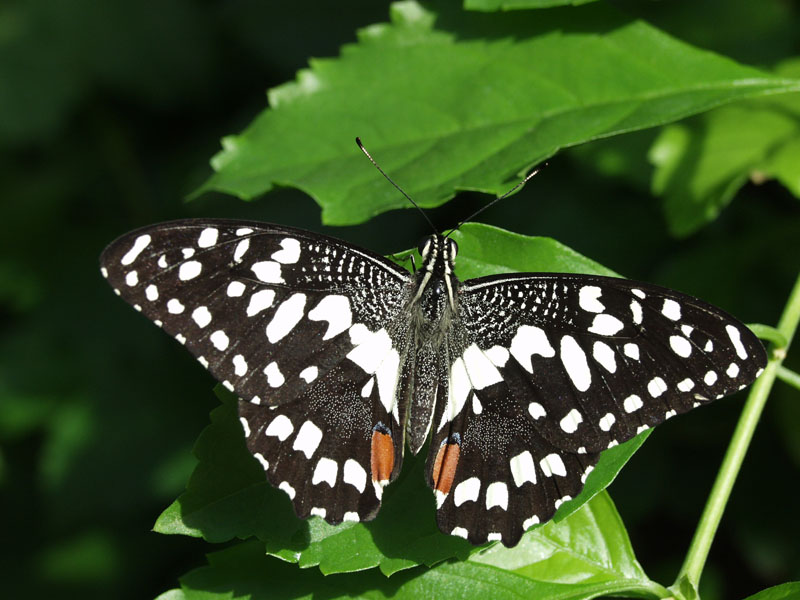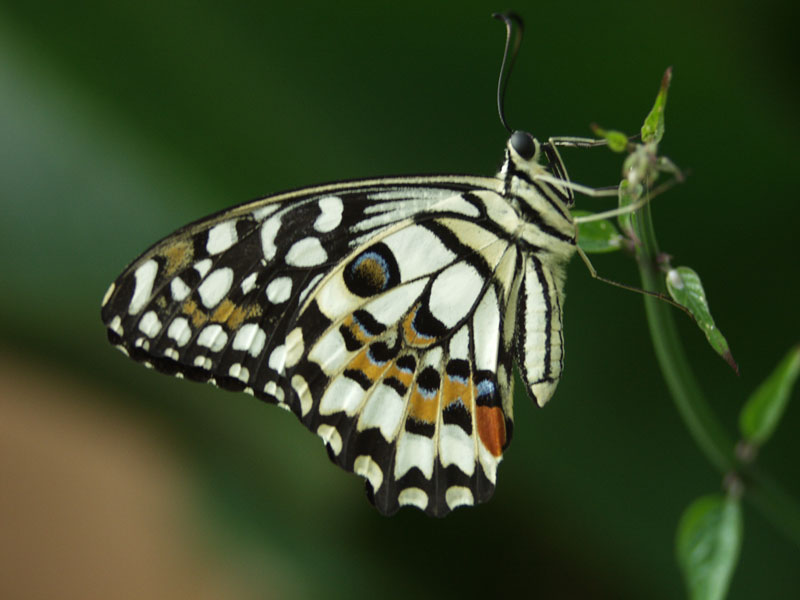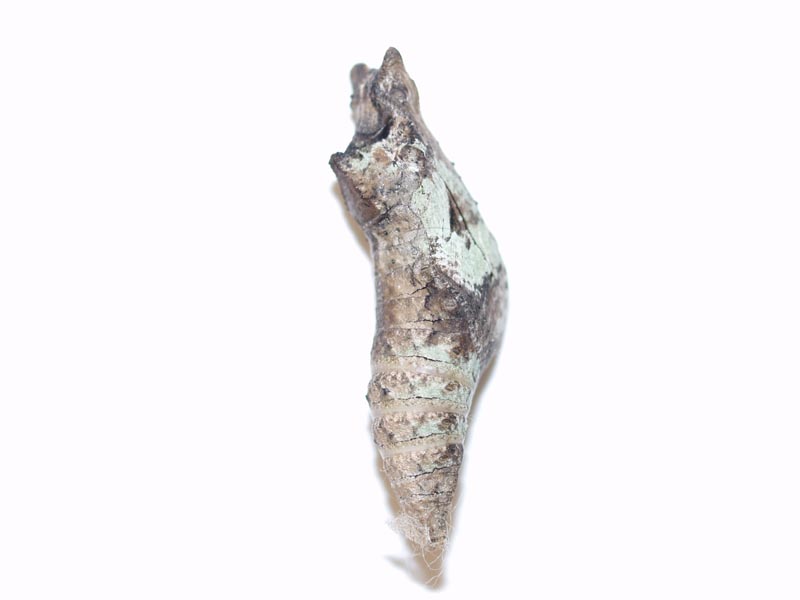


The adults can be found feeding on a variety of flowers, but they seem to prefer flowering legumes when available.
The genus Papilio is Latin for Butterfly. The origin of the specie is currently unknown.
You would usually see this butterfly in open plains and areas where citrus plants are present, but it is also not uncommon to see them in urban areas as well.
After mating, the female lays her eggs one at a time usually on the topside of the host leaves. After emerging, the caterpillar feeds on the host leaves until they form their pupae. The chrysalides are usually found hanging horizontally from the host plant and stay that way until they emerge.
There are multiple generations each year which makes it possible to find adults throughout the year.
The Lime Butterfly and the Citrus Butterfly (Papilio demodocus) look very similar except for a couple small differences. The best way to tell the two apart is to look at the orange dots found on the hind wing. If the orange dot has a black dot inside that fills most of it then it is Citrus, but if the black dot is small and only found at the top then it is a Lime Butterfly.